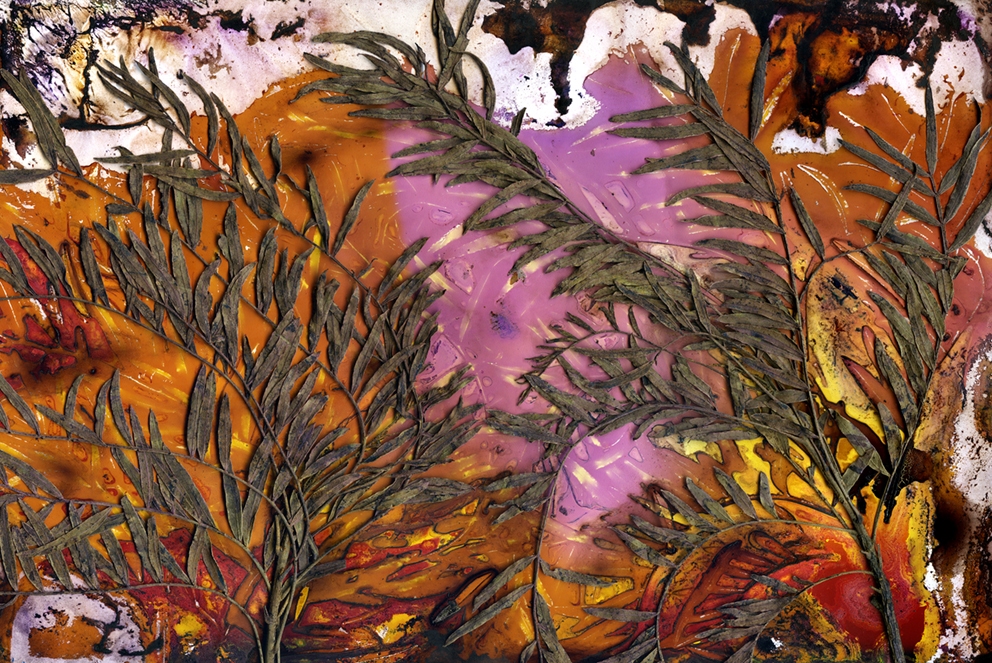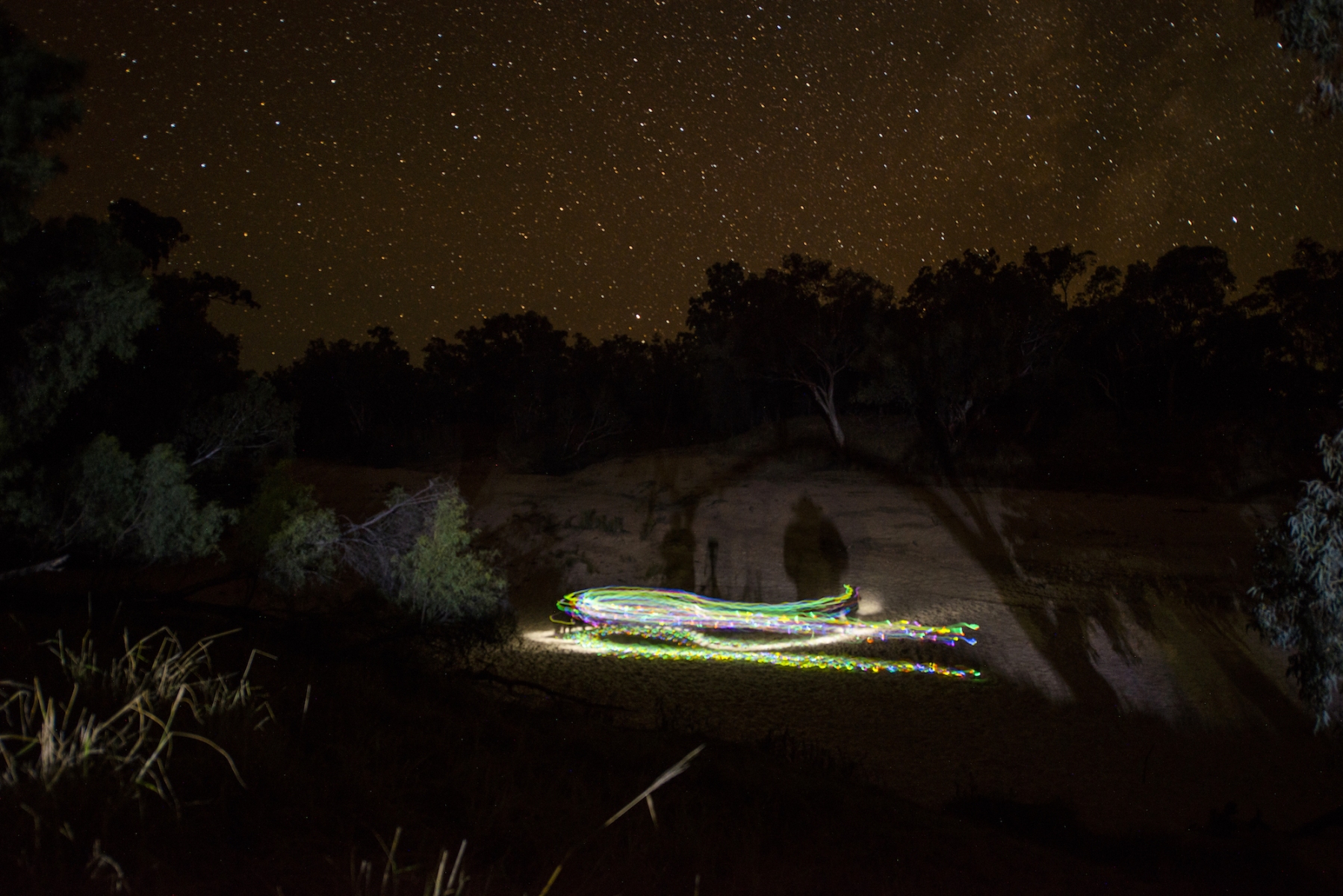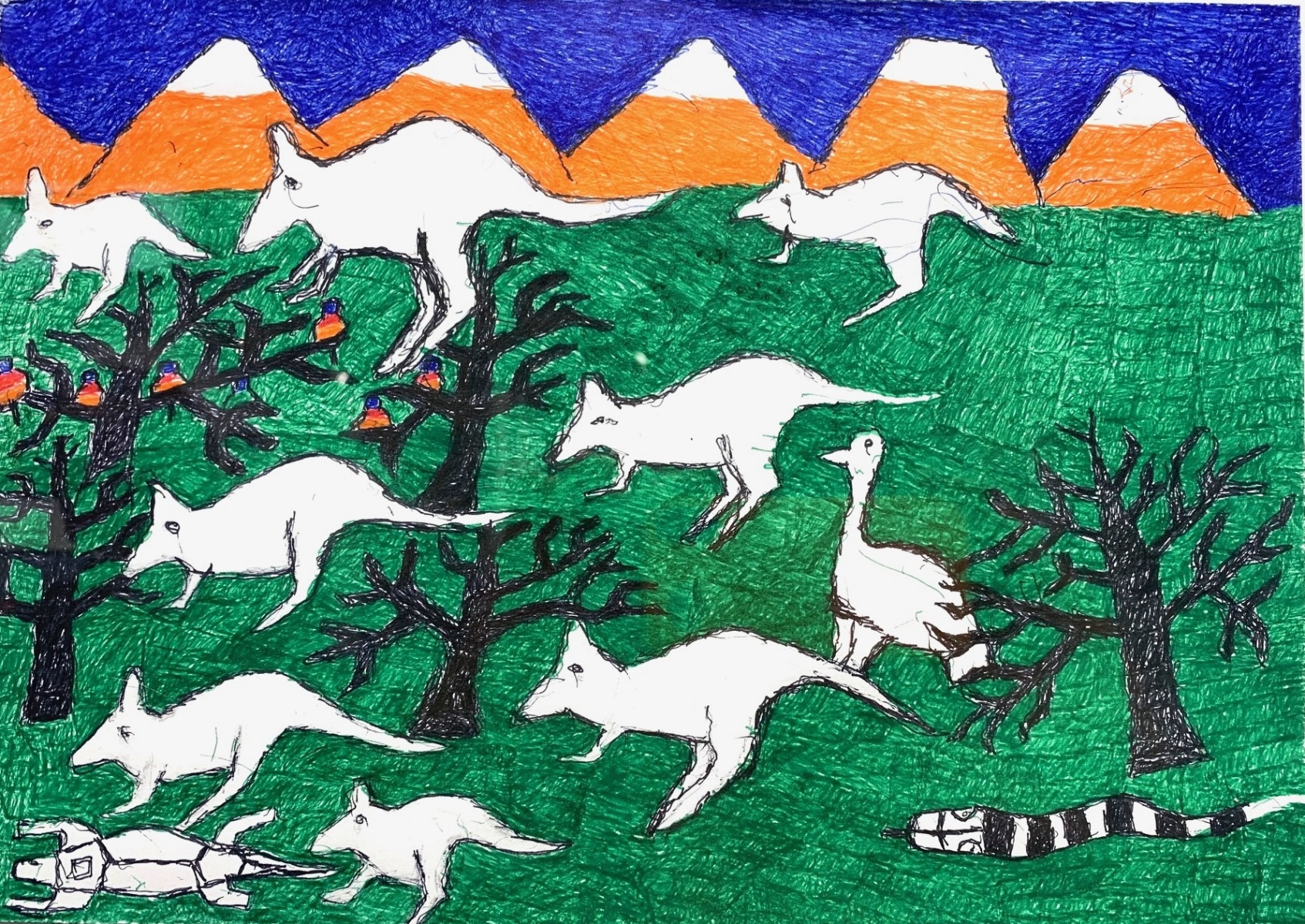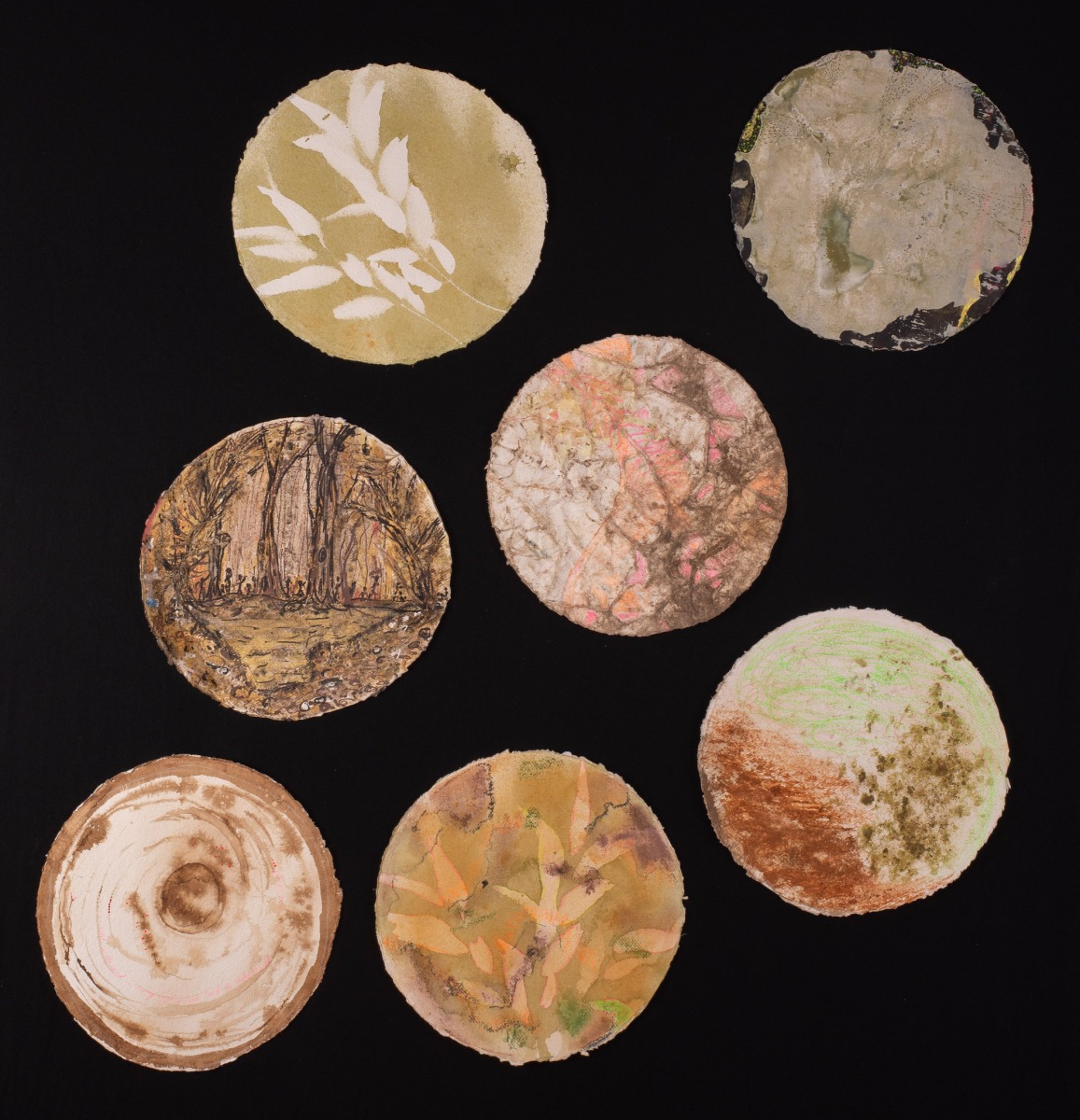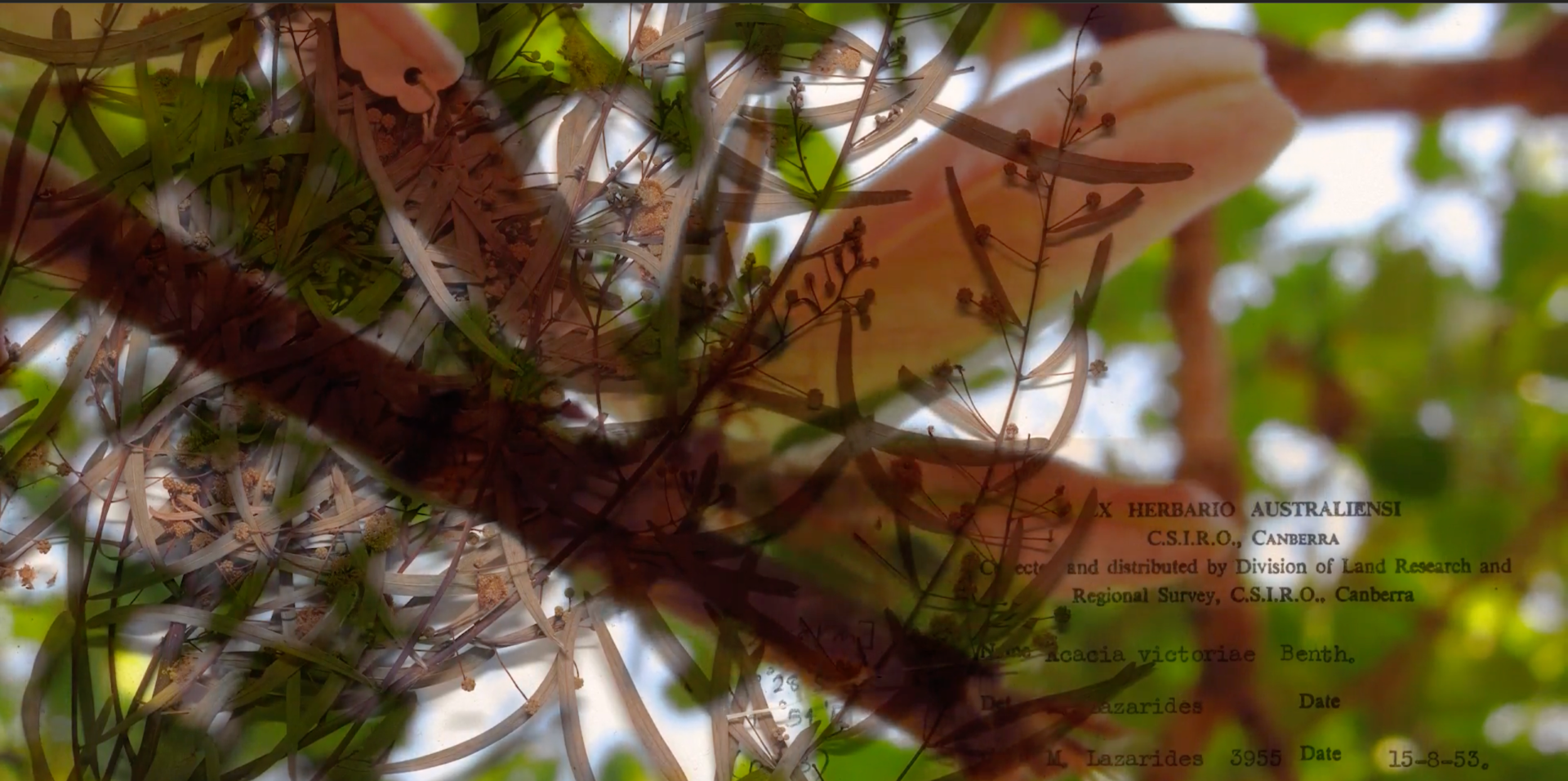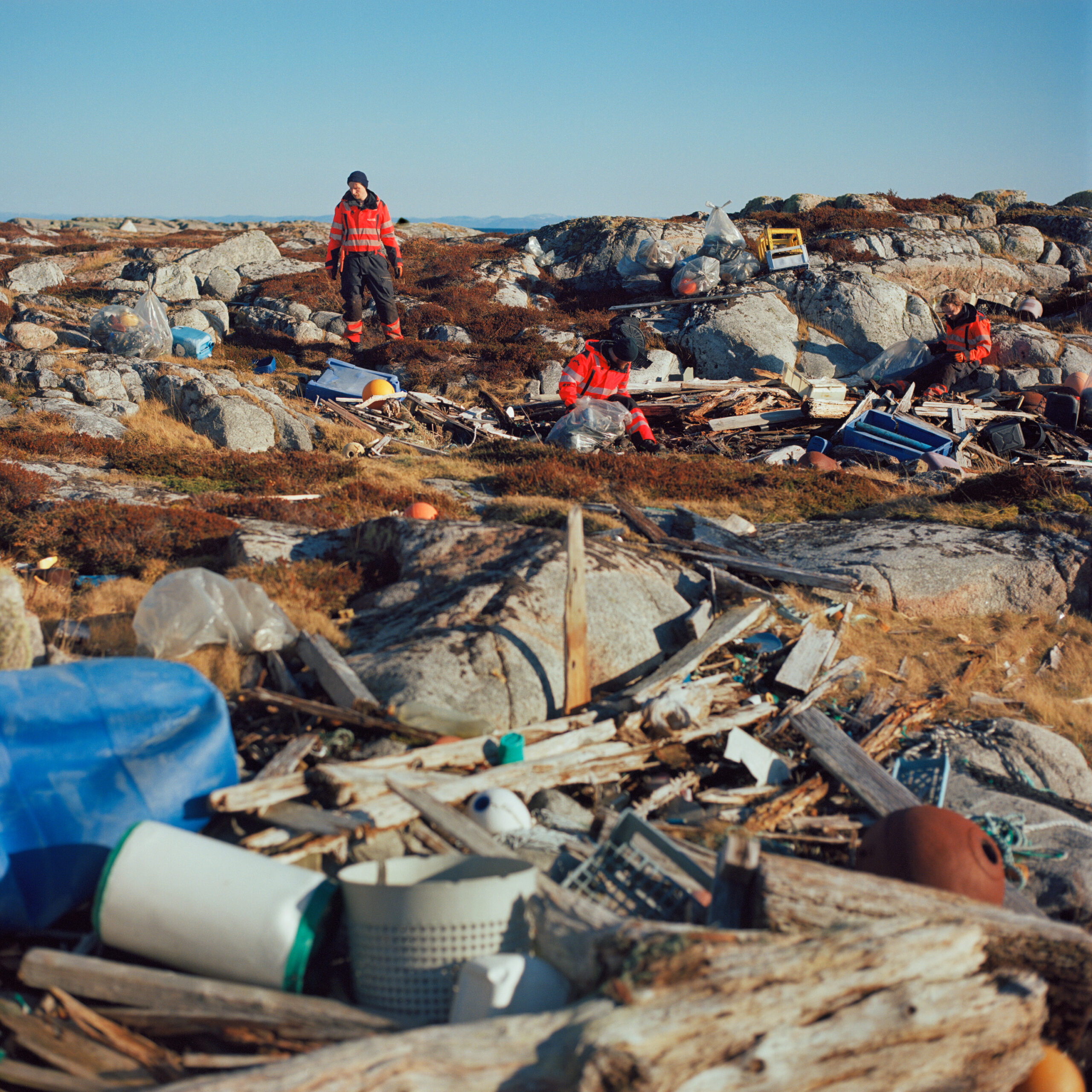When Vernessa Fien and her husband Ken stopped into the Injune petrol station last week, they’d already noticed black, billowing smoke over Mt Moffat (the second highest peak in the Carnarvon Range). Vernessa, a Gunggari woman with Bidjara connections, is a community arts worker in the Maranoa Region who has been active in cross-cultural Indigenous/settler community-building for over two decades. Moments before while traveling in the car, she’d noticed that the bush on both sides of the Rolleston-Injune road had been backburned in preparation for fire season. She planned to be in Mitchell the next day to install Yimbaya Maranoa at the Mitchell on Maranoa Gallery with her collaborators. Luckily for Vernessa and Ken, they made it home safely—just minutes before the road was closed due to the fires. In fact, as they drove away from the petrol station, nine firefighting trucks pulled up to fill their petrol tanks. As of today (Monday 6 November), the road is re-opened. However, Queensland’s state traffic website currently warns of ongoing bushfires at Carnarvon Gorge affecting visibility, and is asking drivers to delay travel on the Carnarvon Highway.[1]
Narratives of fire, flood, drought, extreme heat, and the impacts of such catastrophes on everyday life, is increasingly the norm in towns like Mitchell and Injune in this region of southwest Queensland. With environmentally-destructive crises occurring much more frequently, Yimbaya Maranoa (“listening closely to the Maranoa River”) is an important presence alongside local cultural and environmental narratives. A First Nations-led project initiated by Saraeva Mitchell and Aunty Lynette Nixon with former Maranoa resident and artist, Jude Taggart Roberts, the Remapping Mitchell Arts Collective has continued with Traditional Custodians Vernessa Fien and Vicki Saunders in conjunction with Taggart Roberts.
The collective features over twenty artists and creatives. According to Taggart Roberts, the works in this show are “centred around the river and being on the river.” Most of the works were made during three creative camps, the first in 2018, held on the banks of the Maranoa River.[2] The sites chosen are significant to Gunggari People and were followed by Major Mitchell on his expedition to the Gulf in 1846. The aim of the Remapping Mitchell Art Collective is to amplify stories of the river and region by using art and creativity to foreground perspectives largely absent, silent or at least less visible in contemporary historical accounts of the region.[3]
Yimbaya in Gungarri is translated to mean “listen to me,” conveying “to listen deeply” and also to converse or yarn in a circular manner, generating and regenerating connection, stories, and meaning. It is most fitting, then, that this exhibition by a group of artists who have committed to working together, to listen to, and respond to each other’s stories, also aims to bring together and share settler and Gunggari stories centred around the Maranoa Region. For these reasons, the circle is a major theme of Yimbaya Maranoa. The experience of truly listening across cultural differences—to the Other—has been used here as a creative strategy to listen deeply to the river and to Country, and to create new stories, healing stories about our different relationships with Country in the Maranoa.
For example, to create the collaborative drawing Circular Listening (2023), (produced during the 2022 camp), each artist was given a circle of watercolour paper with which to experiment. Then, Vicki Saunders, a Gunggari arts based health researcher, poet and storyworker, spoke to the group about using dadirri, yimbaya, and deep active listening practices to explore and map relationships with Country and to capture what was ‘heard’ beneath the sounds. The resulting drawings and paintings attest to the wide range of personal responses to Country and the diverse materials each artist brought to the experiment of connecting to the river. In a number of these works, ochres, river mud, and river water were used to transform the paper. When shown together, the dialogue built between the circles becomes a relational story of different perspectives of Country and its colours, textures, rhythms, and imagery.
Yimbaya Maranoa is the labour of a deep commitment to strengthening understanding of each other through art, stories, and nature. On entering the exhibition, one may feel it brings together too many voices, vying for attention. In contemporary art, exclusion establishes what is ‘good’ and ‘bad’ art to support art market processes of valuation and investment. However, Yimbaya Maranoa is premised on inclusion, a strategy that is often aligned with amateur art societies and hobbyist crafts. This is not the case with Yimbaya Maranoa: all of the works are of a high calibre. Moreover, due to the skill and confidence of the exhibition’s hang, the viewing experience is ultimately engaging and satisfying; there are so many wonderful works to look at. Any initial unease points to the uniqueness of the show and underscores the reality that a critical art language for such cross-cultural exhibitions has not yet been developed.
Upon entering, one first sees Clare Cowley’s Three Waterways Crossing (2022), a large-scale, multi-coloured painting whose gestural mark-making is fluid and playfully obsessive, calling to mind the play of light on the river’s surface and undercurrents. To the left are paintings on paper by Donna Malone, an artist whose dexterity and ingenuity with materials and imagery make me think that Paul Klee must be a favourite artist of hers. On the wall opposite, Deena Dodd, a descendant of the Gunggari people around Mitchell, paints abstract landscapes on circular canvases whose visual and material textures tickle the eye with tiny, palpable sensual details, much like microcosmic close-ups of riverbeds and leaves. Bill Dodd, a local Gunggari man, has contributed fifteen comic book-coloured, framed drawings. Dodd’s story is extraordinary: paralysed at the age of twenty from a dive into shallow water, he holds Artline markers in his mouth to make his work, resulting in a feathery, sensitive line. His works are unrelenting in their enthusiastic devotion to embedding images of animal and plant life within complex, mesmerising patterns making for—I’m embarrassed to say it—luscious eye candy.
With such a vast range of artistic approaches included, it’s difficult to pin down a consistent form or theme in Yimbaya Maranoa. Rather than suggesting this is a curatorial oversight, the exhibition’s far-reaching aesthetic of collaboration is a challenge to the contemporary art world status quo of omitting many voices.The Maranoa is a region of cultural, spiritual, and environmental significance linked to Booringa (‘place of fire’ in Gunggari language). Yimbaya Maranoa draws on the theme of Country as a living entity and the source of existence for all humans and nonhumans, both living and nonliving. Collective stories of living and being in this unique Country offer an infinite field for observation, contemplation, and being-with others. Going forward, the Remapping Mitchell Arts Collective seeks to demonstrate further the potential for the arts to connect communities and to heal the stories currently being told and shared in the region and to do so in purposeful, creative, and heart-centred ways.
Carol Schwarzman is a visual artist and arts writer based in Meanjin/Brisbane. She is currently a PhD candidate at University of Queensland.

